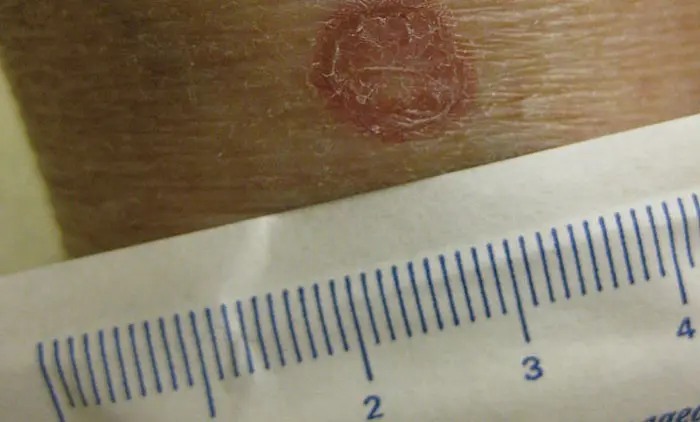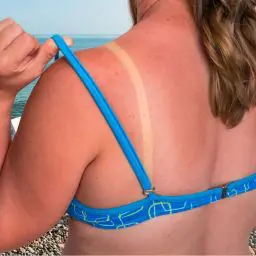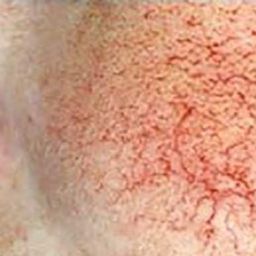Porokeratosis
Circular Scaly Lesions
Porokeratoses are a skin condition characterized by one or more circular lesions with a thinned, atrophic, and often scaly center surrounded by a raised and hyperkeratonic ridge known as the cornoid lamella. There are many forms of porokeratosis.
Sun Damage and DSAP - Increased Skin Cancer Risk
Disseminated superficial actinic porokeratosis (DSAP) is associated with sun damage but only in those with a family history of DSAP. These lesions appear on sun exposed areas of the arms and legs but almost never on the face. They begin as a small raised bump around a hair follicle and slowly expand, usually to about 10 millimeters. Despite being caused by sun exposure, lesions associated with DSAP, unlike most other forms of porokeratoses, are no more likely to develop skin cancer than areas of normal skin.
Porokeratosis of mibelli (PM) usually appear in childhood and carry an increased risk for skin cancer formation within the lesion. New bumps developing within any form of porokeratosis should be evaluated by a dermatologist, but this is especially true of PM.
Other less common forms of porokeratosis include linear porokeratosis, punctate porokeratosis, and porokeratosis palmaris et plantaris disseminata. No matter which form, however, it is unknown what exactly causes a person to develop porokeratoses, but some variables that increase risk for developing this skin condition include genetic predisposition (someone in your family has had porokeratoses), chronic sun exposure and other forms of radiation, immunosuppression, and trauma such as burns.
Treatment for Porokeratosis
Treatment of porokeratoses is difficult and must be individualized to each case’s specific circumstances. Some may opt for no treatment, however, it is important to monitor porokeratoses for signs of new skin cancer. However, if treatment is desired, success has been found with topical treatments such as 5-fluorouracil, vitamin d-3, imiquimod, diclofenac gel, and retinoids, oral retinoids, cryotherapy, electrodessication, dermabrasion, carbon dioxide and pulse-dye lasers, and phototherapy. The lesion may simply be excised if it begins to develop malignant features. Contact your dermatologist if you think you have porokeratoses to devise a treatment plan that is right for you based on the size of the lesion, its location, and your level of concern.




















